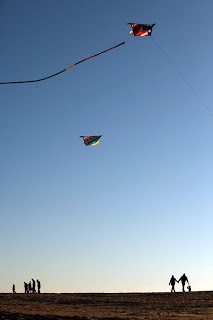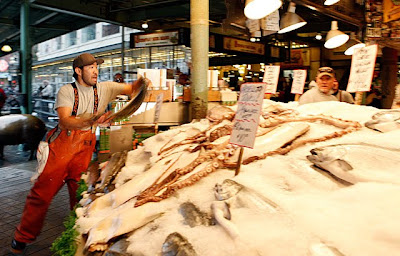Flyers from all over the world flock to the dunes of Kill Devil Hills to relive those 12 seconds of powered flight on a windy December day in 1903. Some remain grounded as they tour the Wright Brothers Memorial, while the dare devils experience the thrill of unpowered flight from the top of Jockey’s Ridge on a hang glider.
At the base of Jockey’s Ridge is the hang gliding flight school run by Kitty Hawk Kites, the oldest hang gliding school on the east coast. The school was started in 1974 by John Harris to help young aviators learn the rapidly growing sport.
Over the years, Kitty Hawk Kites has branched out into unmanned flight as well.
This past Saturday marked the 20th Annual Kites with Lights Celebration, complete with an appearance by the jolly old fat man himself, Santa Claus.
It’s hard to find a day when the sky above the dunes isn’t littered with kites, but for the Saturday night after Thanksgiving, the sky comes aglow. As the sun starts to disappear behind Jockey’s Ridge, large kites with long tails of Christmas Lights, are sent aloft.
With Christmas music in the air and hot cups of cider passed around, the crowd settles in for a dazzling display that is truely unique.













































